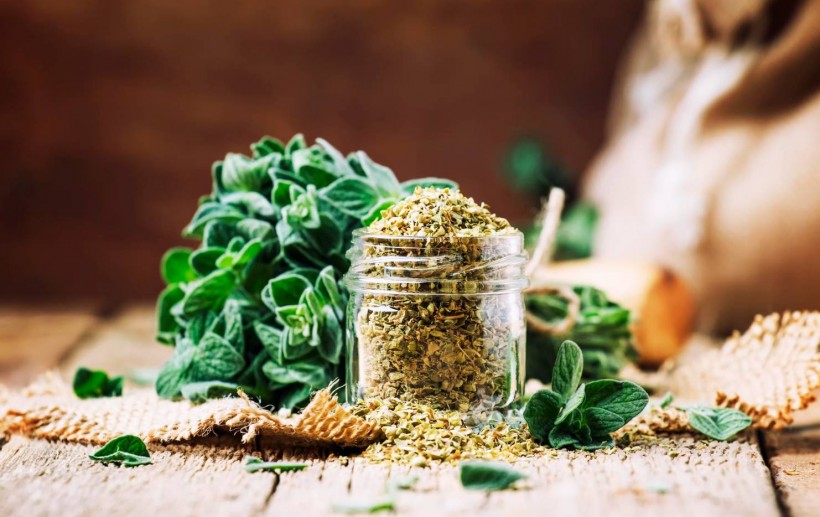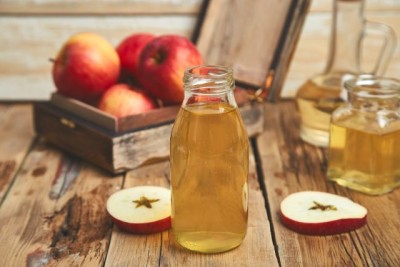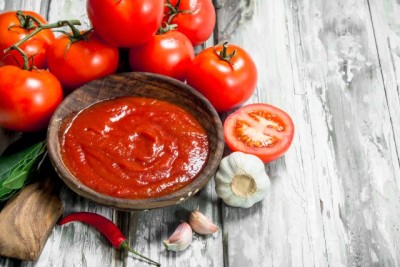31 Forgotten Native American Herbal Remedies That Work Better Than The Pills
Warning: Undefined variable $post in /home/dietofli/public_html/wp-content/plugins/code-snippets/php/snippet-ops.php(582) : eval()'d code on line 3
Warning: Attempt to read property "ID" on null in /home/dietofli/public_html/wp-content/plugins/code-snippets/php/snippet-ops.php(582) : eval()'d code on line 3
The estimated reading time is 10 minutes
Warning: Undefined variable $post in /home/dietofli/public_html/wp-content/plugins/oxygen/component-framework/components/classes/code-block.class.php(115) : eval()'d code on line 3
Warning: Attempt to read property "ID" on null in /home/dietofli/public_html/wp-content/plugins/oxygen/component-framework/components/classes/code-block.class.php(115) : eval()'d code on line 3

- Here is the list of 31 Native American Herbal Remedies
- 1. Alfalfa
- 2. Aloe
- 3. Aspen
- 4. Bee pollen
- 5. Beeswax
- 6. Blackberry
- 7. Black raspberry
- 8. Buckwheat
- 9. Cayenne
- 10. Chamomile
- 11. Chokecherry
- 12. Echinacea
- 13. Eucalyptus
- 14. Fennel
- 15. Feverfew
- 16. Feverwort
- 17. Ginger root
- 18. Ginseng
- 19. Goldenrod
- 20. Honeysuckle
- 21. Hops
- 22. Licorice
- 23. Mullein
- 24. Passion flower
- 25. Red clover
- 26. Rose hip
- 27. Rosemary
- 28. Sage
- 29. Spearmint
- 30. Valerian
- 31. White pine
Maybe you are one of those who deem that herbal remedies are not as useful as pharmaceutical ones, but the real truth is that these herbal remedies have been well-rooted in the Native American remedial practice for centuries.
The Native Americans have developed ‘a wheel’ of herbal and fruit medicines, very similar to the yin & yang of Asian medicine. Actually, the application of herbal remedies [including alternative forms of disease treatment] was the ‘cutting-the-edge medicine’ of their day. This was a type of holistic approach to healing people that relied solely on plants’ unique health benefits.
Here below we reveal a long list of indigenous trees, plants, fruits, and flowers endemic to the North American continent (that is to the northern subcontinent of the Americas). The Native American tribes knew their surprising benefits for human good health and passed down their knowledge from generation to generation.
That’s why it is very important to keep and read these ancient Indian records. They are also good for everyday needs, not only when you are in acute pain or if you suffer from a chronic disease. Take this for instance: licorice tea is the best plant-based remedy for a sore throat. So, many people around the globe still use these amazing herbal remedies, including beeswax and bee pollen, chamomile extract, and lots of others. They certainly are a good source of medical wisdom, gradually acquired over centuries!
To be quite honest with you, nobody knows how exactly the Native Americans sorted out which plants have medicinal properties although ‘trial and error’ was probably one possible approach. Contemporary experts maintain that they observed sick animals around them eating certain plants, and concluded that those plants must have a certain healing property, worth for their health as well. Up to the moment, many scientific studies have studied and verified the medicinal values of these plants. In fact, the common aspirin has been derived from salicin, a substance found in the inner bark of willow trees – used in ancient times for reducing fever and pain.
One should also take into account that these medicines were usually administered through teas, lotions, potions, or pastes that were either swallowed or applied locally on the skin. But, also the plants were eaten as regular food, or added to food or water. It is commonplace that the red-skinned Indians used to apply a salve or poultice to open wounds, as the tribes had frequent fights and clashes.
Note: We highly recommend that you avoid the use of a salve, given the risk of infection from wild sources. You should be very careful with herbal plants because some of these plants can be very dangerous. There was a use of mistletoe that we came across, but the mistletoe is essentially poisonous, and, if not used properly, the results could be counter-productive, and even deadly. Pregnant or nursing women must check with their family doctor, and do plenty of research, prior to using any of these plants as a remedy for their complaint.
Here is the list of 31 Native American Herbal Remedies
1. Alfalfa
It relieves digestion and is used to aid blood clotting. You can use this powerful herb to treat other conditions as well such as: bladder and kidney conditions, arthritis and bone strength. You can also use it just to boost your immune response.
2. Aloe
The aloe leaves contain high concentrations of the aloe gel, that can be used to treat and heal burns, insect bites and wounds.
3. Aspen
The inner bark or xylem is used for making tea to treat fever, coughs and pain. You should also know that it contains salicin, which is found in willow trees as mentioned above, and is the basic ingredient for making the pharmaceutical drug aspirin.
4. Bee pollen
You can always mix it with food and use it as energy provider. The bee pollen also helps digestion and boosts the immune system.
Take notice: you should be very careful because if you’re allergic to bee stings, you will most likely be allergic to bee pollen too.
5. Beeswax
You can use it to soothe burns and insect bites, counting bee stings as well.
Take notice: it can only be used topically, it must not be swallowed!
6. Blackberry
You can use the root, bark and leaves of this plant. You need to crush them first to make a delicious tea. Use this powerful tea to treat diarrhea, reduce inflammation and stimulate your metabolism. When the tea is gargled, it heals sore throat, mouth ulcers, and inflammation of the gums.
7. Black raspberry
You can use the roots of this plant as a remedy too. Just crush the roots and make a tea, or you can just boil them, and then chew them to relieve coughs, diarrhea and general intestinal distress.
8. Buckwheat
The buckwheat seeds are used in broths, and as porridges. People use these seeds to lower their high blood pressure. These seeds are also very helpful with blood clotting, and relieve gastrointestinal upset or infection (diarrhea).
9. Cayenne
You should know that the pods are used as a pain reliever when taken with food or simply drunk in a tea. You can also use them to treat arthritis and digestive disorders.
Or, you can apply it to wounds as a powder to increase blood flow and to act as an antiseptic and anesthetic, to ‘numb the pain.’
10. Chamomile
You can use both chamomile leaves and flowers and make a soothing tea, to treat intestinal problems and nausea.
11. Chokecherry
The Native American tribes considered this herbal remedy as an all-purpose treatment: they pitted the berries, then dried them and crushed them into a tea (or a poultice) to treat a variety of health issues such as: colds, coughs, flu, nausea, inflammation and diarrhea. You can also use it to treat wounds and burns.
Take notice: You should take care because the pits of the chokecherry – the same as apple seeds – are poisonous in high concentrations! So, make sure to pit the cherries thoroughly if you’re considering these for any use.
12. Echinacea
This herb is also known by the name purple coneflower, and it’s a ‘classical’ Native American medicine that was used to strengthen the body, fight infections and fever. The Echinacea has powerful antiseptic properties, and it’s often used for many minor ailments including colds, coughs and the flu.
13. Eucalyptus
The eucalyptus oil from the roots and leaves is a common treatment when poured in a tea to treat sore-throat, coughs, the flu, and fever bouts. The eucalyptus oil is a common ingredient in cough drops.
14. Fennel
This marvelous plant, which has a licorice flavor, is often used in a tea (or just chewed) to relieve sore-throat, cough, to aid digestion, to offer relief from diarrhea, and was a general treatment for winter colds. You can also use this plant as a poultice for eye relief and bad headaches.
15. Feverfew
Many people still use this herbal remedy as a natural relief from fever and headaches [including severe headaches like migraines]. You can also use it to get rid of: digestive problems, asthma, muscle and joint pains.
16. Feverwort
You can use it for many ailments, notably for: soothing general pain, itching and joint stiffness. It can be ingested as a tea drink, or munched, or crushed to a smooth paste and applied as a salve.
17. Ginger root
It is one of the healthiest corms on our planet! Yes, it was a super plant in the Native American medicine too. There are many different ways to make the ginger part of your healthy diet:
– you can crush it and consume it with food, or
– you can have it as a tea cup, or
– as a poultice.
The ginger root will especially improve your digestive health; it has powerful anti-inflammatory properties; it gives a boost to the blood circulation and relieves winter ailments, in addition to bronchitis and joint pain.
18. Ginseng
This exotic herb has a long history that goes back across cultures for millennia. The ginseng roots were also used by the Native Americans as a food supplement, as a tea and as a poultice to help them with exhaustion, and to help them with overall liver and lung function.
Take notice: The ginseng leaves and stems can be used, but the ginseng root has the most concentration of its active ingredients.
19. Goldenrod
People nowadays think that this herbal is just a source of allergies and sneezing, but it was actually considered another ‘miraculous’ medicine by the Native Americans. Uses are individually customized: as a tea, an addition to food, and a topical salve, it is used to treat conditions from bronchitis and chest congestion to colds, the flu, infection, sore throats and as an antiseptic for cuts and abrasions.
20. Honeysuckle
Again you can use all bits and parts of it: the sweet berries, stems, flowers, and leaves. Use them externally to treat reddened and itchy bee stings and skin infections. As a recovery tea, it is used to treat headaches, cold, and sore throat. It also exhibits anti-inflammatory properties.
21. Hops
You can prepare some hot hops tea any time you have digestive problems. Or you can mix it with other remedial herbs such as aloe vera, to loosen up muscles.
Take notice: It can be used to soothe a toothache or a sore throat.
22. Licorice
You can use the licorice roots and leaves to relax chronic coughs, colds, sore throats…
Take notice: The root can also be masticated to relieve a toothache quickly.
23. Mullein
The Native Americans used this plant to make a healthy tea, or they add it to a salad or other solid food. They used it to cure inflammation, coughs, respiratory tract congestions, that is general lung afflictions. It is quite a common herb, so you probably have it accidently growing in your backyard or somewhere near.
24. Passion flower
You can use the passion flower leaves and roots to make a tea to treat anxiety and all types of muscle pains. You can make a poultice to heal injuries on the skin such as: burns, insect bites, etc. You can also add some passion flower leaves to various boils.
25. Red clover
This amazing plant can be found growing literally everywhere. The red clover tiny flowers, leaves and roots are usually infused in a tea, or are used to top or dress food combinations. This common herb is often used to suppress inflammation, improve circulation, and treat respiratory conditions.
26. Rose hip
Have you ever read about the rose hip’s benefits? Well, this is the red-to-orange berry that is the fruit of wild roses. It is already popular as a massive source of vitamin C, and, when eaten whole, crushed into a tea, or added to food, it is used to treat colds, coughing, intestinal distress, as an antiseptic, and to treat swellings.
27. Rosemary
It is a member of the Pine family, and is used for food seasoning, as a tea to treat muscle pain, to improve circulation, and as an all-purpose cleanser of the body.
28. Sage
It is the most powerful natural insect repellent, and it can be used for the standard number of digestive disorders, colds, and sore throat.
29. Spearmint
This amazing herbal remedy was used by the Native American tribes for the treatment of colds, coughs, respiratory upsets, as a stimulant for blood circulation, and as a cure for loose stools.
30. Valerian
The valerian root is grounded for preparing tea drinks for relieving muscle pains, and it is said to have a general calming effect.
31. White pine
You should know that the needle-like leaves and the inner bark of this abundant tree can be infused in any tea. Use it as a standard treatment for respiratory troubles and chest congestions.
Update: Make sure you identify these herbals properly and check with your physician prior using them.
SHARE IT PLEASE WITH FRIENDS AND FAMILY














